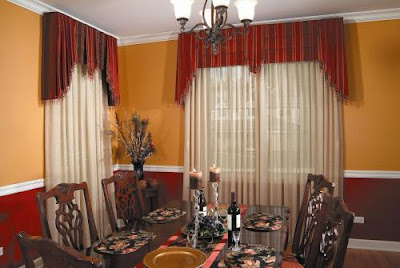When redesigning a room you should always take into account the effect that the window coverings can have on your overall look. A careful choice of color and material in curtains can completely change the style and feel of your windows. The way curtains hang is another factor that can change your home design. Curtain tie backs can be a great detail, and you will probably be surprised how many different positions of tieback there are to be used in giving your curtains a completely unique look.
The type of tie back depends on the way the curtains are hanging. The following types are for standard curtains where one or more panels hang straight down from a rail or pole. The high tie style is when the curtain panels are pulled back to the edge of the window by a tie back positioned above the horizontal centerline of the window. Similarly, the middle tie gathers the curtain panel at around the center point. This can look oddly symmetrical if located right at the centre so should preferably be slightly higher or lower to achieve a good effect.
A low tie pulls the curtain to the window edge about three quarters of the way down to the curtain base. A center tie gathers the curtain panels together in the vertical centre of the window space roughly a quarter or a third from the bottom of the curtain.
If two curtain panels are hung one on top of the other, a crisscrossed tie can be used. To achieve this look the top panel is pulled to the left and secured with a tie, while the inside panel is pulled to the right and fastened in the same way.
The angled tie works best with just one curtain panel covering the window space. The panel is tied loosely in the high tie position, and is then tied more firmly to the edge of the window in the low tie position. This creates a pleasing silhouette against the light coming on through the window.
Curtains are available in both formal and informal styles and choosing the right style for your room can really make your final design come to life. Formal curtains can also be known as draperies and have a number of layers. The layers include a sheer base, often made from very thin lined or lace, heavy, floor length drapes, and a valance that runs across the top of the window and can vary greatly in its complexity. Formal curtains are usually made from a rich material, are heavily lined, and can be found in sitting rooms or dining areas. Informal curtains tend to be just one layer, are often unlined and are used mainly for privacy. They tend to be available in more contemporary colors and designs and are generally less expensive than formal drapes. They are also easier to clean and can often be washed and ironed with your other household linen.



No comments:
Post a Comment